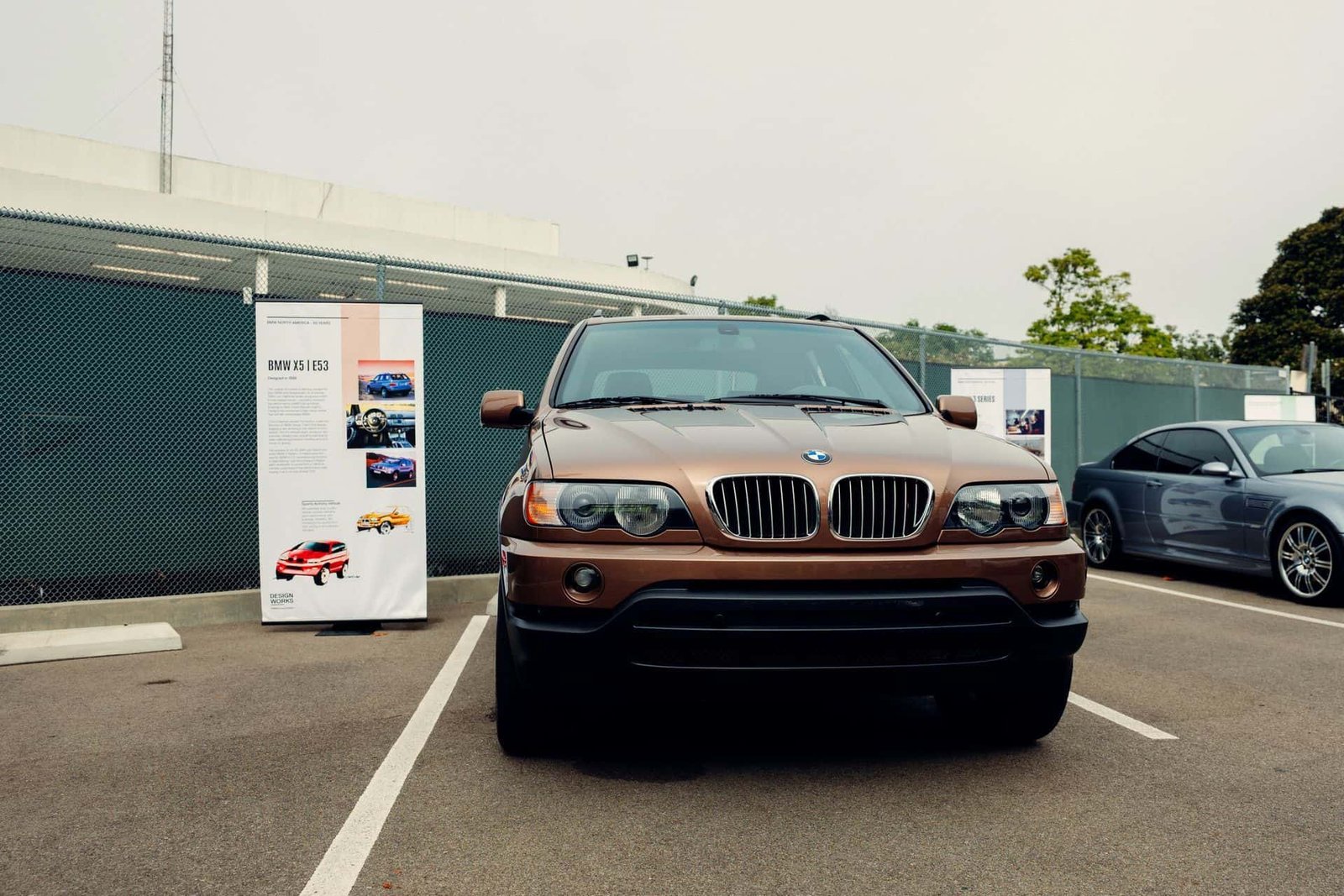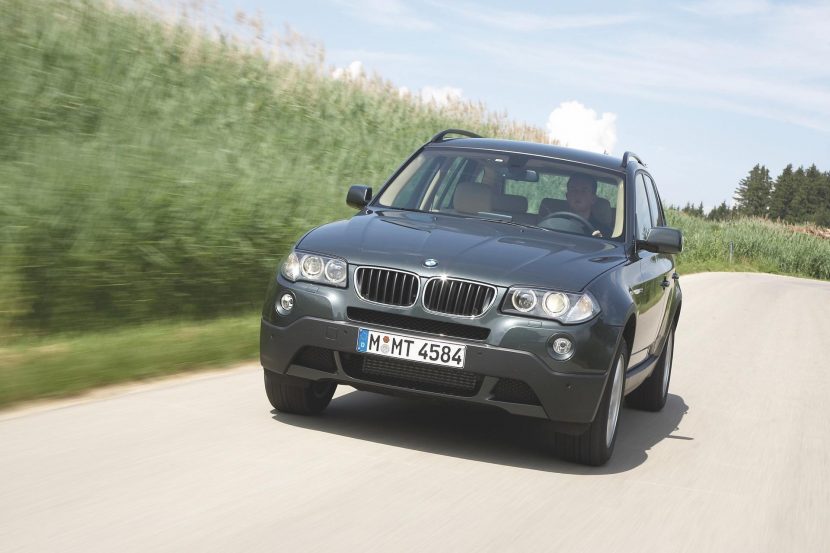Stepping inside BMW’s Designworks studio in California, you immediately sense why this place has shaped so many pivotal BMW products. The studio feels more like a workshop than a corporate design office — clay models in various states of evolution, quick physical mockups scattered across tables, and 3D printers running constantly. Nothing stays digital for long. Ideas become objects here, and because of that, Designworks often sees what BMW needs to do long before Munich does.
It was during a recent behind-the-scenes session at the studio that the origins of one of BMW’s most important vehicles came into focus. As the team revisited early projects, the common thread became unmistakable: the BMW X5 wasn’t just shaped in California — it exists because of California.
Adrian van Hooydonk, BMW Group’s head of designand Hussain Al-Attar, Creative Director at Designworks, made the connection explicit. “The inception of the X5 was a major starting point,” Al-Attar said, reflecting on the moment BMW first recognized the scale of the SUV opportunity in the United States. Today the X5 is a cornerstone of the portfolio, often outselling even the X3, according to Van Hooydonk. But in the early 1990s, the idea of a BMW SUV wasn’t universally embraced inside the company. BMW was also late to the party. Jeep had already transformed the market with the Grand Cherokee in 1992. By the time the first-generation X5 arrived in 1999, BMW had ground to make up.
How Land Rover’s Acquisition Led To The BMW X5
The turning point can be traced to 1994 — a year when two major events quietly set the X5 in motion. BMW acquired Land Roverwhich immediately forced the company to consider how an off-road-capable vehicle might coexist with BMW’s traditional emphasis on on-road dynamics. That same year, BMW also completed its acquisition of Designworks. What Munich gained wasn’t just another design studio; it gained a cultural antenna pointed directly at the U.S. West Coast during the biggest SUV boom the country had ever seen.
BMW asked Designworks to explore what a BMW SUV could be, and the results came quickly. The studio’s early sketches of what would become Project E53 were astonishingly close to the production car. Even the first drawing — including a sharply angled Hofmeister kink — already captured the proportions and stance that would define the X5. The assignment then shifted to Munich where designer Chris Chapman, who had joined Designworks after several years at Isuzu, began shaping the X5’s form alongside Chris Bangle.
Chapman’s influence was critical. His background in the SUV and truck world gave him a perspective BMW designers in Germany didn’t have. At the time, some inside BMW still thought their SUV could be small — something closer to a Kia Sportage. Chapman pushed back firmly. If BMW wanted to succeed in America, he argued, the proportions needed to be closer to a Jeep Grand Cherokee. A BMW SUV that looked too compact simply wouldn’t resonate with U.S. buyers.
The Design Process
That insistence led to a number of physical tests, many of them conducted or initiated at Designworks. Hussein Al-Attar, Creative Director at Designworks LA, recalled how early proportion studies were sometimes built from improvised materials. “We use some very sophisticated high-tech methods,” he joked, “putting cars on blocks and adding fake wheels to them… just to see how a smaller X5 might look, or something sportier. These were experiments.”
Those experiments weren’t limited to ride height or track width. Some early mockups placed the developing E53 next to a full-size GMC pickup truck so Munich-based executives could understand just how large American SUVs really were. Other prototypes exaggerated wheel size or stance simply to force conversations about scale. The point wasn’t to design a caricature — it was to ensure BMW understood the realities of the U.S. market, realities far removed from the streets of Munich.
Van Hooydonk explained why those physical comparisons were so important. “Sometimes we just have to create a model,” he said, “put it out there next to existing cars… and then people can begin to understand.” California didn’t just supply sketches; it forced the company to see proportions in real space.
By 1996, BMW approved the design direction and froze the styling — an unusually early freeze, taking place nearly three years before the start of production. The final exterior was refined under Frank Stephenson, but Chapman’s early vision remained largely intact. Design patents followed in 1998, setting the stage for a 1999 debut.
More X Models Were Designed in California
As the years passed, the influence of Designworks only grew. Al-Attar noted that “with just a few exceptions, most of the X vehicles were designed here in California… first X5, first-gen X3, second-gen X3, first-gen X1, current X5, current X7.” The studio didn’t simply contribute to the X lineup; it became its driving force.
As the conversation at Designworks expanded, van Hooydonk offered insight into why California ended up shaping so many of BMW’s X vehicles. All BMW designs, he explained, are developed through internal competitions between studios in Munich, Shanghai, and California. But the X vehicles kept coming out of California. “In most cases, the X vehicles were won by the California studio,” he said. “Maybe because they understand this lifestyle. They live it.”
That understanding translated into measurable impact. “The X range is now half of our portfolio,” van Hooydonk noted, pointing out that most BMW SUVs are built in Spartanburg, which has become BMW’s largest global plant and, remarkably, the biggest exporter of cars in the United States—larger than any American automaker’s individual export volume. “A lot has happened since the very first X5,” he said, “and that was an initiative from Designworks.”
Designworks Plays a Major Role in the BMW Design Process
He went on to describe Designworks’ unique role within BMW’s design structure. While the studio competes in all major vehicle programs, it also has the freedom—and the responsibility—to identify “white spaces” in BMW’s lineup. The original X5 was one. The XM was another. Some of these proposals arrive too early, he admitted, but timing is part of the process. “Sometimes you’re too early with that,” he said. “Doesn’t matter. Sometimes you ride at the right moment in time. The XM took a little bit longer than the team probably would have liked, but in the end, we got there.”
Then came his most revealing line, the one that explains the studio’s ethos more clearly than any organizational chart: “I always tell the team we need to have more ideas than the company can build, because the opposite would be very bad.”
Looking back, the arrival of the X5 marked the moment when BMW stopped viewing SUVs as an external trend and began seeing them as a core part of the brand. “Then X3 came right after,” van Hooydonk said, “then a whole range of X came.” The X5 became the blueprint — not only for proportions and design language but for understanding that California, and the American market in general, held insights BMW couldn’t afford to ignore.
X5 – One of the Most Successful BMW Product
Viewed through that lens, the X5 was more than a successful product. It was a demonstration of what happens when BMW listens to its California studio—a studio that builds ideas early, tests them physically, reads American roads with instinct, and pushes the company toward segments it might otherwise miss.
Today the X5 stands as one of BMW’s defining vehicles, a global bestseller that reshaped Spartanburgexpanded BMW’s identity, and changed the company’s trajectory. Yet its origins remain unmistakably Californian—born in a studio full of clay, foam, improvised wheels, and designers who saw the future of the SUV long before Munich did.
And as van Hooydonk reminded the team, that is exactly what Designworks is meant to do.
(Photos: Ryan Postas)







